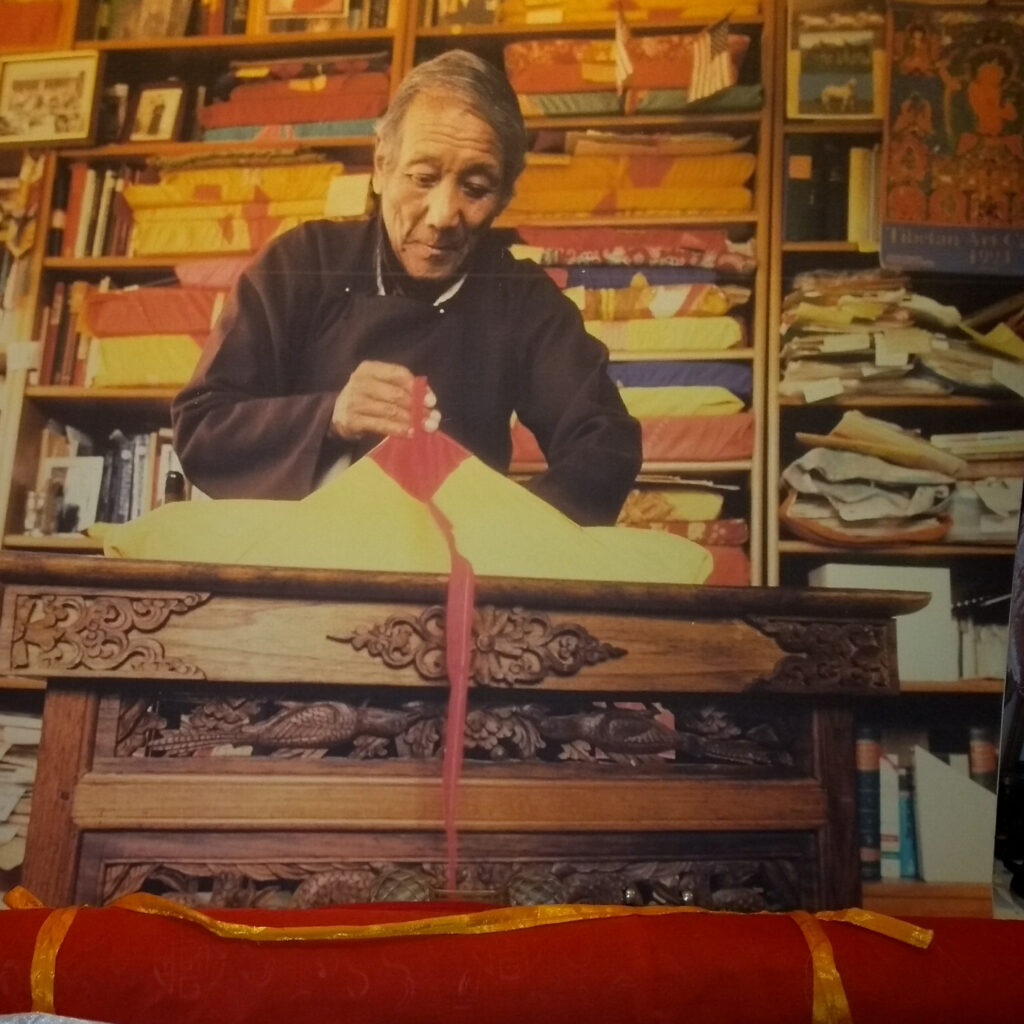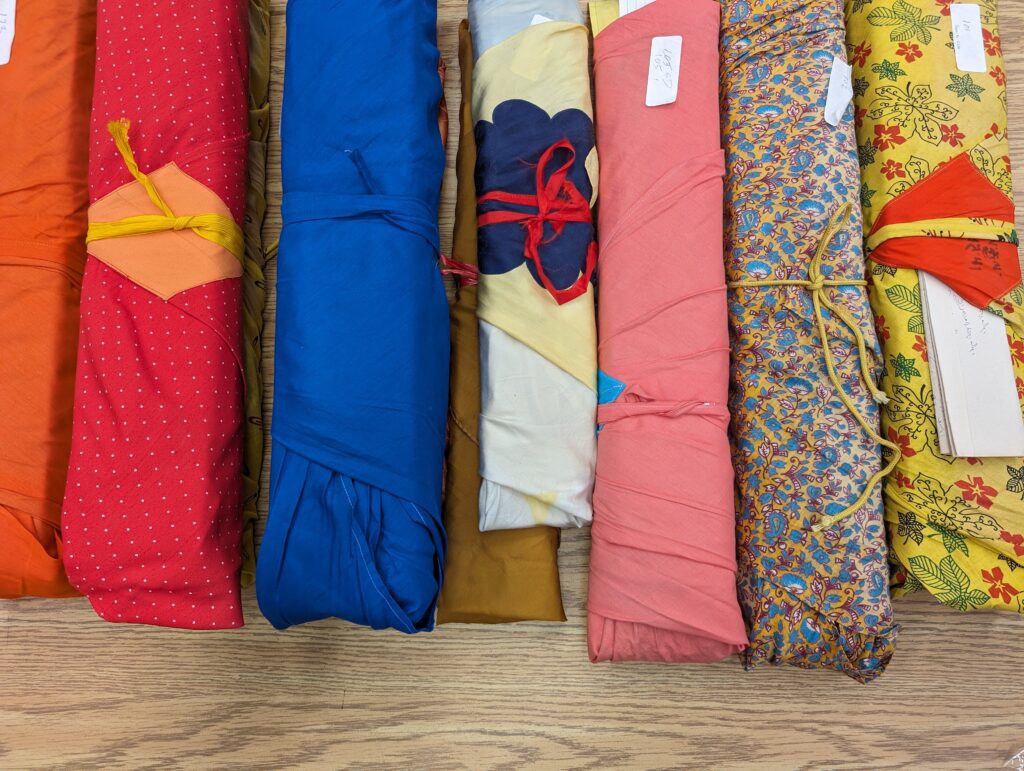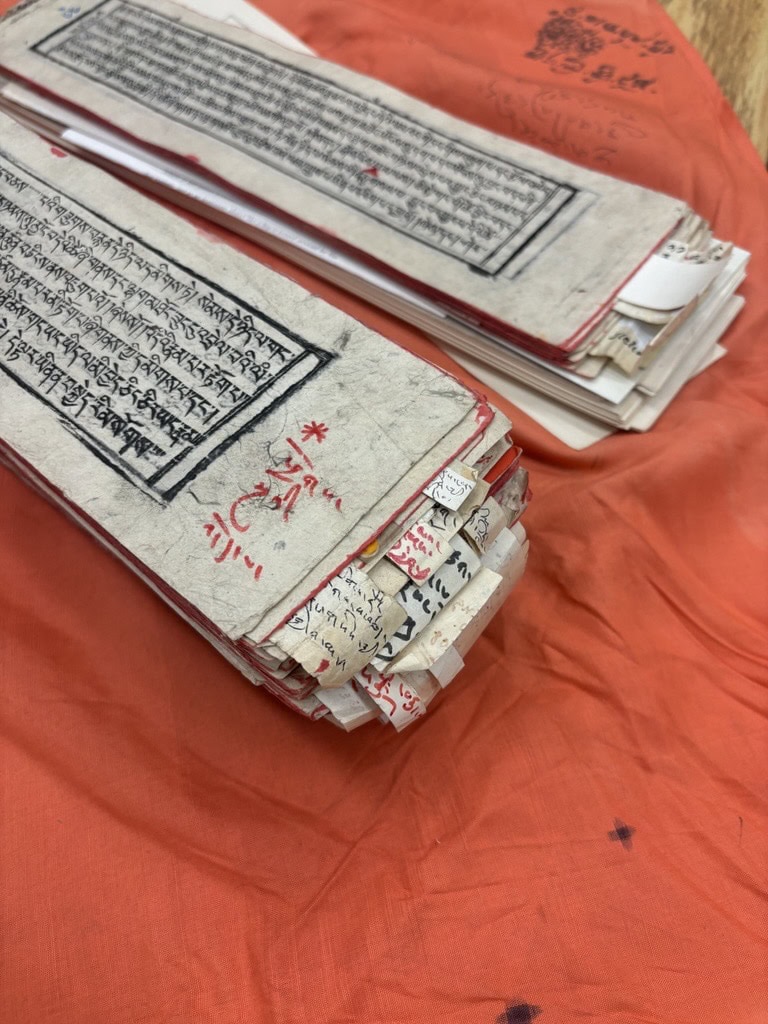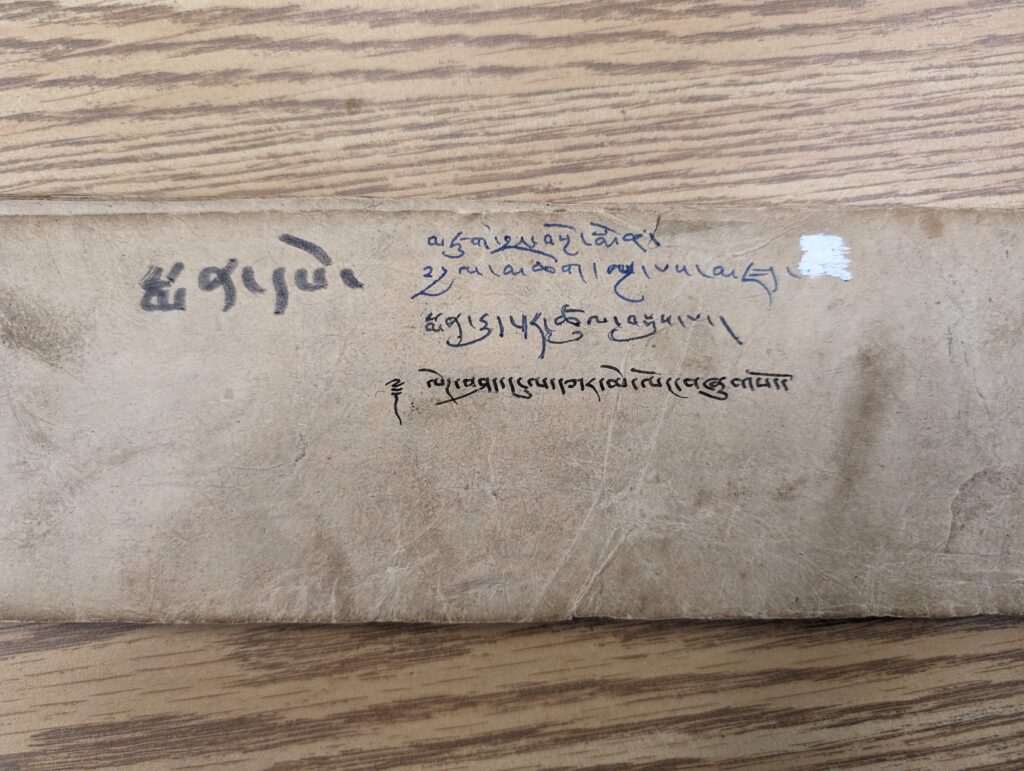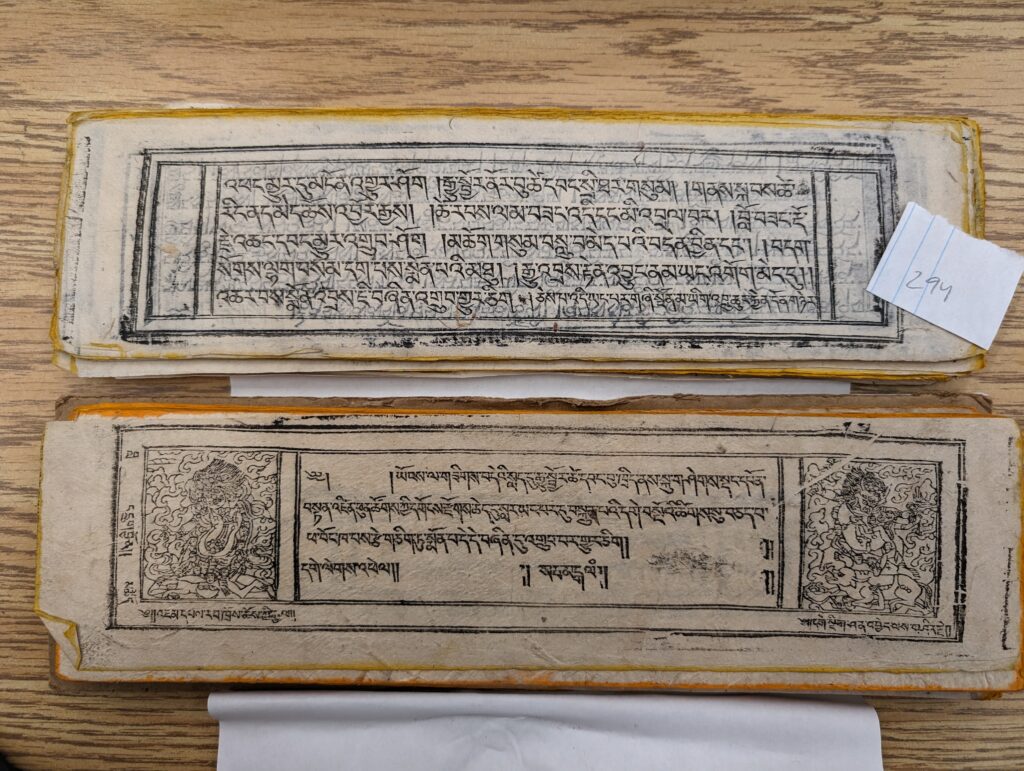“He had something like 15 wooden trunks specially constructed so he could bring his collection to Canada,” Samphe recalled. “It was a huge enterprise – my mother had to order these trunks, and in various sizes. They didn’t bring any household goods when they emigrated – but they brought the pechas.”
“The Lhalungpa Collection provides deep insights into Indigenous Tibetan scholarship and perspectives,” said the library’s director Hana Kim. “It represents a transformative addition to our holdings, further enhancing the largest Tibetan collection in Canada.”
The collection was donated to U of T by Lhalungpa’s sons Samphe and Tenzin.
Growing up in New Delhi, India, Samphe says he knew his father maintained a significant library, but didn’t realize the scale of it until the Lhalungpa family moved to Canada in 1971. “He had something like 15 wooden trunks specially constructed so he could bring his collection to Canada… they didn’t bring any household goods when they emigrated, but they brought the pechas,” Samphe said.
Born in Lhasa, Tibet in 1926, Lhalungpa became an ordained monk at age eight and pursued studies in Buddhism and Tibetan history.
After serving as a monk-official with the 14th Dalai Lama for seven years, he moved to New Delhi, where he spearheaded Tibetan language broadcasts from India’s public radio station, helping connect Tibetans in south Asia and the rest of the world. Later in his life, he taught Buddhist philosophy at the University of British Columbia and even had a brief foray in Hollywood, acting as a technical advisor for Martin Scorsese’s 1996 biopic of the 14th Dalai Lama, Kundun.
Like many Tibetan refugees, Lhalungpa’s life was marked by political upheaval and a long period of separation from his family. He continued to collect pechas and other rare texts as part of a living library that informed his teaching, translation work and scholarship right up until his death in 2008.
